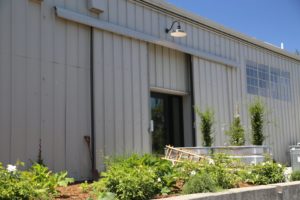
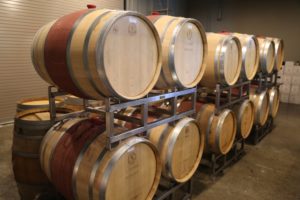
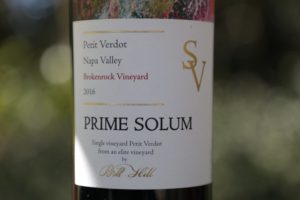 Prime Solum. The heart of Prime Solum’s wine portfolio is Broken Rock Vineyard, a 96-acre site about 2 miles in on Atlas Peak Road, located north of the city of Napa. The vineyard is located on what is referred to as the Atlas bench or ‘shoulder’ at an elevation of between 600 and 700 feet – just below the official minimum 760-foo elevation designation of the Atlas Peak Appellation. The vineyard is planted to 45 acres including a majority to Cabernet Sauvignon with smaller plantings of Merlot, Cabernet Franc and Petit Verdot. Grapes from this vineyard are highly coveted, with the majority of the fruit sold rather than used for the Prime Solum wines. Prominent vintners who buy or have purchased grapes from this site include Philippe Melka, Paul Hobbs, Hall Winery and Titus Vineyards among many others. The winery is overseen by long time Napa vintner Bill Hill and his daughter Elana.
Prime Solum. The heart of Prime Solum’s wine portfolio is Broken Rock Vineyard, a 96-acre site about 2 miles in on Atlas Peak Road, located north of the city of Napa. The vineyard is located on what is referred to as the Atlas bench or ‘shoulder’ at an elevation of between 600 and 700 feet – just below the official minimum 760-foo elevation designation of the Atlas Peak Appellation. The vineyard is planted to 45 acres including a majority to Cabernet Sauvignon with smaller plantings of Merlot, Cabernet Franc and Petit Verdot. Grapes from this vineyard are highly coveted, with the majority of the fruit sold rather than used for the Prime Solum wines. Prominent vintners who buy or have purchased grapes from this site include Philippe Melka, Paul Hobbs, Hall Winery and Titus Vineyards among many others. The winery is overseen by long time Napa vintner Bill Hill and his daughter Elana.
While traveling through Europe, Bill became bitten by the wine bug especially from his time spent in Burgundy. He- moved to the San Francisco Bay area from Oklahoma (where he was born and raised) to attend Stanford University; he graduated with an MBA in 1969. He eventually moved to Napa Valley in 1974 and began to develop vineyards spanning the length of the valley.
He made his first wine in 1978 but never released it. A year later he made another vintage; this was the first vintage released under his new brand at the time using his namesake, William Hill. Their early focus was on Chardonnay and Cabernet Sauvignon; these wines earned a number of accolades through various tasting competitions. In 1982 William Hill produced three distinctive Chardonnays bottled as silver, gold and a reserve. That same year a blind tasting was held in San Francisco hosted by Academie du Vin; the 1980 William Hill Mt. Veeder Chardonnay was selected as the top white wine by a panel of 50 California based wine experts and vintners. Steven Spurrier selected the wines for this tasting.
In 1983 several of the William Hill 1979 and 1980 wines were entered in a blind tasting competition at the Mark Hopkins Hotel in San Francisco against bottlings from several First Growth wineries in Bordeaux. Some two hundred individuals including educated wine consumers, restaurateurs and wine writers tasted 8 wines in two flights. The William Hill wines were rated the top wines, ahead of Château Mouton Rothschild, Château Latour, Château Haut-Brion, Château Margaux and Château Lafite-Rothschild.
In 1986 Bill was involved in the transaction of what was the largest dollar amount ever spent for a vineyard in Napa Valley at the time, an 1,100 acre site in Foss Valley for 13 million dollars which eventually became home to Antinori Napa Valley. That price for that amount of acreage in Napa Valley, sounds like a steal from today’s pricing perspective.
For many years the William Hill wines were made at other wineries; the existing William Hill Winery was built in the late 1980s. William sold the winery in 1992 and it has since changed hands several times. GALLO has owned the winery and property since 2007, having used the hospitality space to host visitors for William Hill Winery until 2024 when the hospitality space was transitioned over to showcase wines from GALLO owned Pahlmeyer.
Bill is a pioneer of vineyard development in California, Oregon and Washington. In 1998 he co-founded Pacific Premiere Vineyards and during 13 years with the company he oversaw the development of thousands of acres of high-end vineyards throughout the west coast of the USA encompassing some 40+ premiere properties. Incidentally the first Napa Valley vineyard he developed was on Diamond Mountain, a piece of property he called Diamond Mountain Ranch now owned by Sterling Vineyards. Much later, Bill opened Silverado Studios, a brief foray into operating a tasting room along the southern part of the Silverado Trail – now owned by Laird Winery.
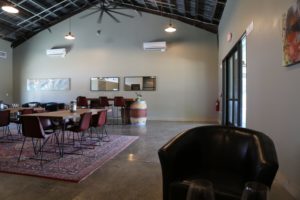
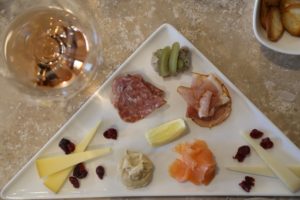 In June of 2018, four years since Bill began to look at potentially opening a tasting room to showcase his wines, the Prime Solum Tasting Room opened in a part of the city of Napa called Vichy Springs – or what we call the Silverado Wine & Arts District. Several wineries or tasting rooms are immediate neighbors, as are several art galleries.
In June of 2018, four years since Bill began to look at potentially opening a tasting room to showcase his wines, the Prime Solum Tasting Room opened in a part of the city of Napa called Vichy Springs – or what we call the Silverado Wine & Arts District. Several wineries or tasting rooms are immediate neighbors, as are several art galleries.
Bill’s daughter Elana grew up in the wine industry and fondly remembers as a little girl the day when she watched the walls of William Hill Winery raised and recalling many a time playing in the winery cellar. But she was not immediately bitten by the wine bug. Rather she moved to Santa Cruz and then Orange County where she earned her BA at UC Irvine followed by her MFA at Claremont Graduate University.
After graduating she moved to downtown Los Angeles (skid row/arts district part of town) and became a professional artist focusing on abstract art while simultaneously teaching art. When her father mentioned he was thinking of opening a tasting room, conveniently Elana offered to help manage its operations while looking forward to living in a more rural environment with Napa Valley being the antithesis of Skid Row in Los Angeles.
After moving back to Napa Valley in 2015 Elana took jobs at Newton and simultaneously at Chimney Rock, Mark Herold and at James Cole, gaining invaluable hospitality experience. In addition, she took viticulture classes at Napa College and spent significant time working among the vines at the Broken Rock Vineyard.
The building housing the tasting room is estimated to date from the 1950s and has seen many uses over the years including as a machine shop, storage for an art gallery, possible use when whisky was being distilled nearby and for yoga. Seizing upon the opportunity to capture some of the original elements in the buildings’ construction, the Prime Solum team kept a number of original features while significantly upgrading the building. Today it is spacious and setup to host multiple groups for seated tastings. While not a winery, they use part of the space for barrel aging (interested visitors can request a barrel samples). And several of Elana’s paintings hang in the tasting room – some of which have been used for their wine labels.
And because this is within the city limits of Napa, the tasting room is not confined to the same regulations as if they were in the county. However, while in the city limits, this is certainly not an urban tasting room (about a 10-minute drive to downtown). Several other perks of being within the confines of the city include being open to the public by walk-in and serving wine by the glass or bottle. A variety of charcuterie and assorted snacks can be purchased to complement their wines. If the weather permits, guests can enjoy wine outdoors under the confines of an extended roof.
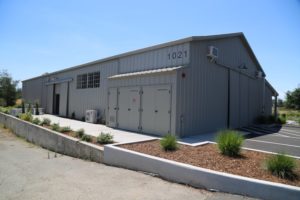
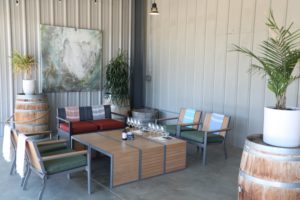 The focus of the tastings is on both the Expression and Prime Solum wines. Expression wines focus on single vineyard cooler weather grown varieties – primarily from vineyards that Bill developed and or managed. The Expression wines are made in Sonoma County but are sourced from premium vineyards in Sonoma County (latitude 38) and Mendocino County (latitude 39). These are wines from Burgundian varieties. The Prime Solum wines are from the family-owned estate Broken Rock Vineyard and select other Napa based vineyards; these wines are made at a winery the Hill family has managed for years located in downtown Napa and focus on Bordeaux red varieties. And unlike most wineries whose current releases are within the past few years, the wines showcased at the tasting room are mostly 6 to 12 years post vintage.
The focus of the tastings is on both the Expression and Prime Solum wines. Expression wines focus on single vineyard cooler weather grown varieties – primarily from vineyards that Bill developed and or managed. The Expression wines are made in Sonoma County but are sourced from premium vineyards in Sonoma County (latitude 38) and Mendocino County (latitude 39). These are wines from Burgundian varieties. The Prime Solum wines are from the family-owned estate Broken Rock Vineyard and select other Napa based vineyards; these wines are made at a winery the Hill family has managed for years located in downtown Napa and focus on Bordeaux red varieties. And unlike most wineries whose current releases are within the past few years, the wines showcased at the tasting room are mostly 6 to 12 years post vintage.
Solum is a term associated with soil science referring to both surface and subsoil layers; Prime Solum refers to premium terroir. Bill’s winemaking preferences are to express specific vineyard sites and his wines are about the place and are not about manipulation. He tends to also prefer cooler weather sites.
During the tasting of the Expression Wines their Chardonnay is always tasted after the Pinot Noir, a habit that Bill developed after visiting some of the great chateau properties in Burgundy.
Select Wines
Whites/Rosé
The 2021 Prime Solum Rosé of Cabernet Sauvignon is from the Broken Rock Vineyard. This wine was made by saignée (bleeding off the juice). It is medium salmon in color; The minerally, bright and appealing bouquet features aromas of rose petal, cranberry, strawberry guava and lime zest. The palate sports flavors of ruby grapefruit, watermelon, raspberry, strawberry and a finish which lingers with a character similar to grapefruit or pomelo pith. This wine can be a summertime sipper, but it also has the character and body to pair with a variety of foods, including a diversity of seafood. Elana suggested pairing it with something spicy, especially including jalapeños. Finishes with plenty of energy; for reference, we tasted three years post vintage.
The 2019 expression 38° Chardonnay is medium to deep golden in color; the bouquet offers aromas of honeycomb, star jasmine, nectarines, white peaches, grapefruit pith, pineapple, kumquat, bruised apple and citrus blossom. On the palate there are flavors of Bosc pear, guava, golden kiwi, pineapple, red delicious apple and gooseberry. There is also a lingering light herbal character, including perhaps dill or lemongrass. The creamy and supple texture balances out the bright acidity nicely. This is in no way an oaky or buttery bottling. Refreshing. Sometimes we are not used to using adjectives such as refreshing when describing California wines of this variety. This wine is aging very nicely and tasting in a sweet spot 5 years post vintage at the time of our tasting.
The 2015 Expression 38° Chardonnay is from arguably the most well-known vineyard that Bill has developed over the years (Gap’s Crown Vineyard in Sonoma County). Dark golden in the glass, the pretty and intriguing bouquet sports aromas of melon, honeysuckle, citrus and a hint of brown sugar. Rounded on the palate with structure but without being heavy this wine features excellent acidity. It drinks well by itself but is also a very food friendly style of Chardonnay.
Reds
The 2016 Prime Solum Cabernet Franc is deep ruby in color; the bouquet is an appealing union of fruit and floral characteristics. These include violets, lavender and lilacs with complementing notes of dried red chili spice flakes (which we often cook with in some of our favorite Thai dishes), sage, jalapeño pepper, soy sauce and fruit aromas of dark raspberry, blackberry, cherry, dark licorice and chocolate. This bouquet is super layered and as a result, highly interesting. It’s not another opulent and hedonistic contemporary Napa Valley Cabernet Sauvignon. The texture features satiny, pillowy and polished tannins; the palate is both dark and savory with notes of smoked sage, tobacco, spicy plum skin and crushed peppercorn. Pair with a beef tenderloin bagged in assorted spicy dry rub spices overnight followed by an afternoon chilling poolside with friends and a BBQ.
The 2016 Prime Solum Petit Verdot is deep ruby in color; the dark, savory and fruited bouquet offers aromas of blackberry, boysenberry, cherry, dark raspberry and red plum. While the focus is clearly on its core of fruit, there are some other aromas at play including a darker brooding character, damp potting soil, mocha, dark chocolate, old cedar, assorted dried herbs and espresso. Juicy, red fruited and ripe, the palate offers flavors of plum, raspberry, cherry, boysenberry and blackberry. Like the bouquet the focus here is on the fruit with accompanying flavors of chocolate, smoked cedar, sage and a light but lingering note of dried tobacco. The gravelly tannins fully coat the palate, but are rounded and as a result, seamlessly fit into the finish. This wine is holding up very well 8 years post vintage at the time of our tasting. Pair with a well-marbled wagyu brisket and a BBQ.
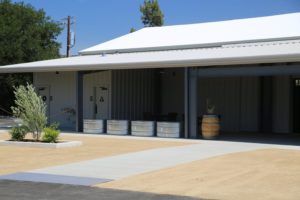
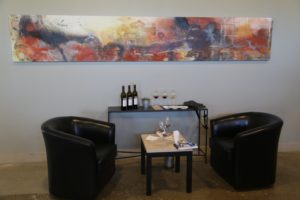
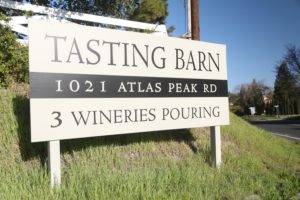 In 2012 all the Prime Solum wines from the Broken Rock Vineyard were 100% varietal; this is not always the case each year.
In 2012 all the Prime Solum wines from the Broken Rock Vineyard were 100% varietal; this is not always the case each year.
The 2012 Prime Solum Cabernet Franc, Broken Rock Vineyard is ruby dark red in the glass showing a sweetness of aroma including baking spices, dark chocolate and ripe blackberry. It doesn’t reveal the typical expression that wine from this variety often shows, including herbal notes from cooler sites. The aromatics are lovely; they tend to be on the riper side. Fairly supple across the palate, this bottling shows both red and darker cherry flavors with the finish anchored softly by fine-grained tannins and darker spice notes.
The 2012 Prime Solum Merlot, Broken Rock Vineyard offers darker fruit aromatics along with brown chocolate. There is a pleasing density and depth here that perhaps one doesn’t always associate with this variety, especially when it is 100% varietal. The bouquet offers a sweet cherry liqueur note, a ripe elegance if you will. It sports flavors of blackberry and black cherry with lingering notes of mocha. This is a full bodied Merlot that will surely please most Cabernet Sauvignon drinkers.
The 2012 Prime Solum Cabernet Sauvignon, Broken Rock Vineyard shows compelling aromatics; the bouquet is initially elegant, revealing mint and a sweet note including desert spices and dry dust. As the wine breathes it offers mostly fruit aromas including ripe blackberry and boysenberry. It is somewhat savory in its aromatic presentation. Fairly plush across the palate, this wine is big but balanced. The tannins are slightly chewy and certainly noticeable but not overly gripping. The extended finish is prolonged by intense fruit flavors accompanied by a kiss of mocha.
The 2013 Expression 38 Pinot Noir is from the Goldrock Ridge Vineyard in Sonoma County. Noticeably dark in color, this wine reveals aromas of white pepper, plum and darker spices; the bouquet is earthy and somewhat savory. This bottling is balanced and very supple across the palate, yet full bodied and with depth of flavor. Well-integrated slightly earthy tannins linger on the finish along with a similar spice component that was expressed on the bouquet.
The 2013 Expression 39 Pinot Noir is from the Ordway Vineyard in Anderson Valley in Mendocino County, located in a cooler part of Anderson Valley closer to the mouth of the Navarro River. It shows a noticeable sweetness on the bouquet including notes of various baking spices including brown sugar and cinnamon along with cedar. It is also somewhat floral with aromas of raspberry. The palate offers a richness of flavor, supported by bright acidity. The finish is long, flavorful and offers nuances of cedar and mocha.
—
Total production of the Expression wines is about 3,000 cases per year and of Prime Solum, only about 800 cases per year. For more information, to purchase wine, to schedule a tasting and or to join their wine club, visit: www.primesolum.com






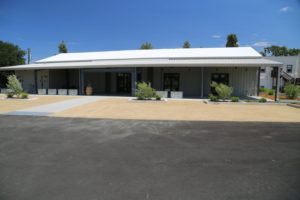
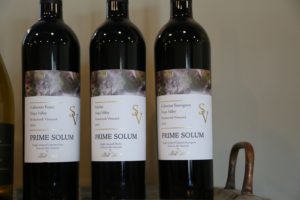
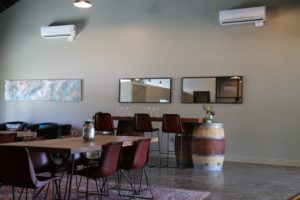
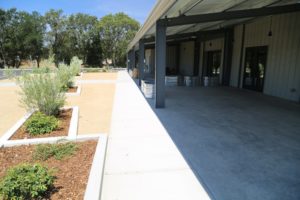
Leave a Reply